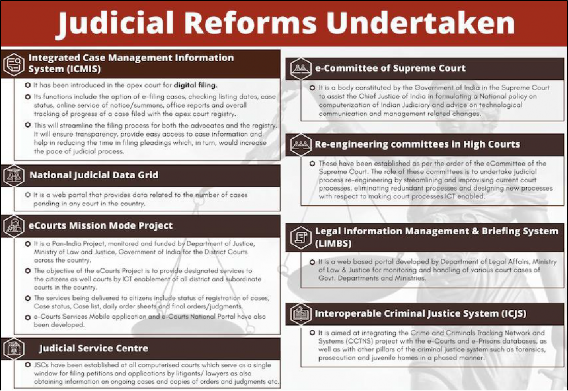Challenges
♤ Lack of investment in court and IT infrastructure: State of the art e-courts require the deployment of new age technology like high speed internet connection, latest audio and video equipments, cloud computing, availability of sufficient bandwidth etc.
♤ Lack of technical knowhow among court officials and staff and absence of dedicated in- house technical support.
♤ Low awareness amongst litigants and advocates: As per a survey less than 40 per cent of cases were filed exclusively through a computerized system.
♤ Digital divide in access to justice: due to insufficient infrastructure, non-availability of electricity and internet connectivity and low digital literacy in rural areas.
♤ Interdepartmental Challenges: due to lack of coordination, communication and interoperability of software between various departments.
♤ Cyber security threats: Judicial data comprise of sensitive case information and litigant data, their electronic storing and transmission fuels security and privacy concerns.
♤ Procedural problems: like admissibility and authenticity of the evidence received through the video and/or audio transmissions, the identity of the witness and/or individuals subject of the hearings, confidentiality of the hearings etc.

